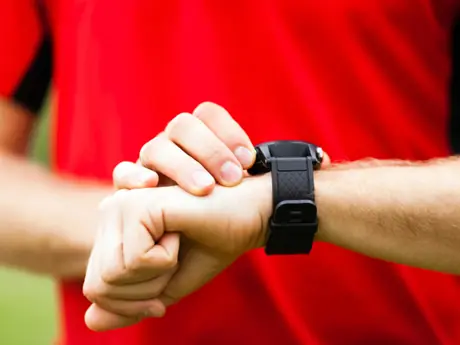
Each time you go for a run you carry with you a hope and an expectation that the workout will have a positive effect on your fitness. There are two fundamental variables that determine how a run affects your body: duration and intensity.
Duration can be measured directly by time or indirectly by distance. The longer a run lasts, the more pronounced its training effects. This doesn't mean every run should be as long as you can make it. The reason is that longer runs generate more fatigue as well as stronger fitness adaptations, and your body can only handle so much fatigue. But as a general rule, as the duration of your runs increase; your fitness level will also increase.
More: How to Cheat Fatigue
Intensity works differently. All running intensities are beneficial for fitness, but each intensity level is beneficial in its own way. Easy jogging enhances fat-burning capacity, sprinting improves running technique, and intensities between these extremes yield other benefits. The most effective training regimen combines efforts at a range of intensity levels.
It's one thing to create or select a training plan that balances different training intensities appropriately, but it's another thing to execute that plan correctly. Doing so requires that you actively monitor and control your intensity during every run.
There are three practical metrics that runners can use to monitor and control their running intensity: pace, heart rate and perceived effort. Each method has advantages and disadvantages, but you will get the best results from your training if you use all three in the proper way.
More: How Much High-Intensity Training Do Runners Really Need?
Pace
Most runners are familiar with pace, which is generally measured in minutes and seconds per mile. It's easy to measure pace on the roads and trails by wearing a stopwatch and tracking time elapsed between mile markers, or by wearing a speed and distance device that provides continuous pace monitoring. On the track, you can measure pace as the time it takes to complete each 400-meter lap.
Pace is not a direct measure of physiological intensity. For example, whereas one runner's maximal rate of fat burning might fall at a pace of 10:15 per mile, another, more gifted runner's maximal rate of fat burning might correspond to a much faster pace of 7:00 per mile.
To use pace monitoring effectively in your training, you need to choose pace targets for different types of workouts that are tailored to your ability and fitness level and therefore elicit the right physiological response. Tools such as Greg McMillan's Running Calculator make this easy. Just enter a recent race time and the calculator will spit out appropriate target paces for various workouts.
The main advantage of pace monitoring is that, as a performance metric, it pushes runners to run harder for better "splits." But this is also its main drawback. You shouldn't push yourself in every run.
Monitoring your pace is helpful in key workouts such as intervals and tempo runs where aiming for a high level of performance is appropriate. All too often, however, runners who monitor their pace in easy runs go faster than they should because the clock puts them in a performance mindset. If you're susceptible to this temptation, it's best that you forgo pace monitoring in easy runs.
- 1
- of
- 2
About the Author

Get ACTIVE on the Go


Couch to 5K®
The best way to get new runners off the couch and across the finish line of their first 5K.
Available for iOS | Android






Discuss This Article